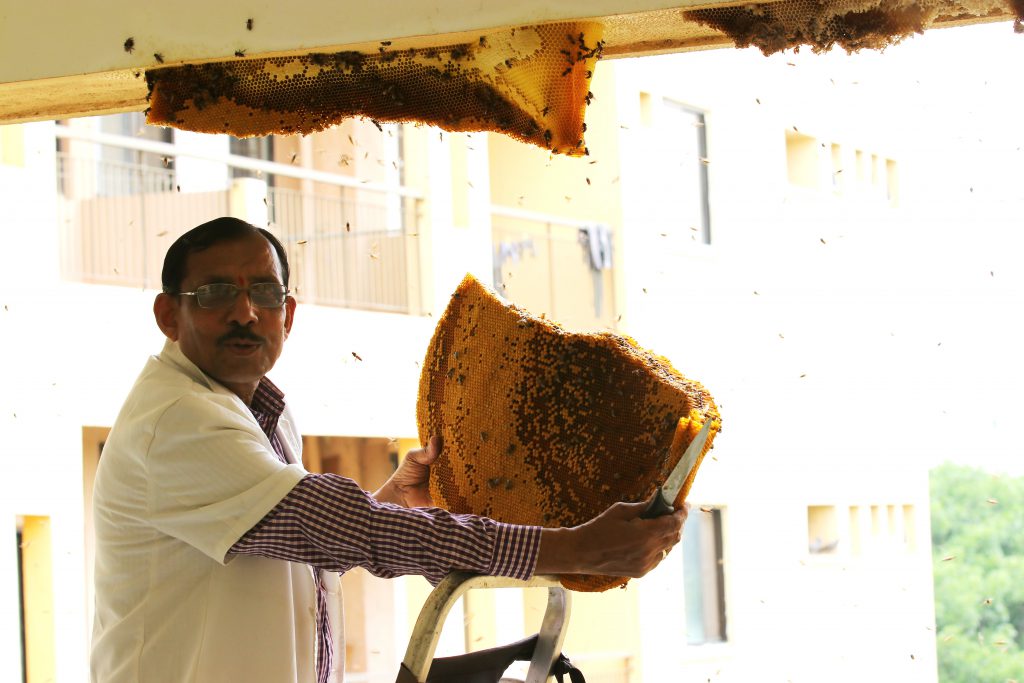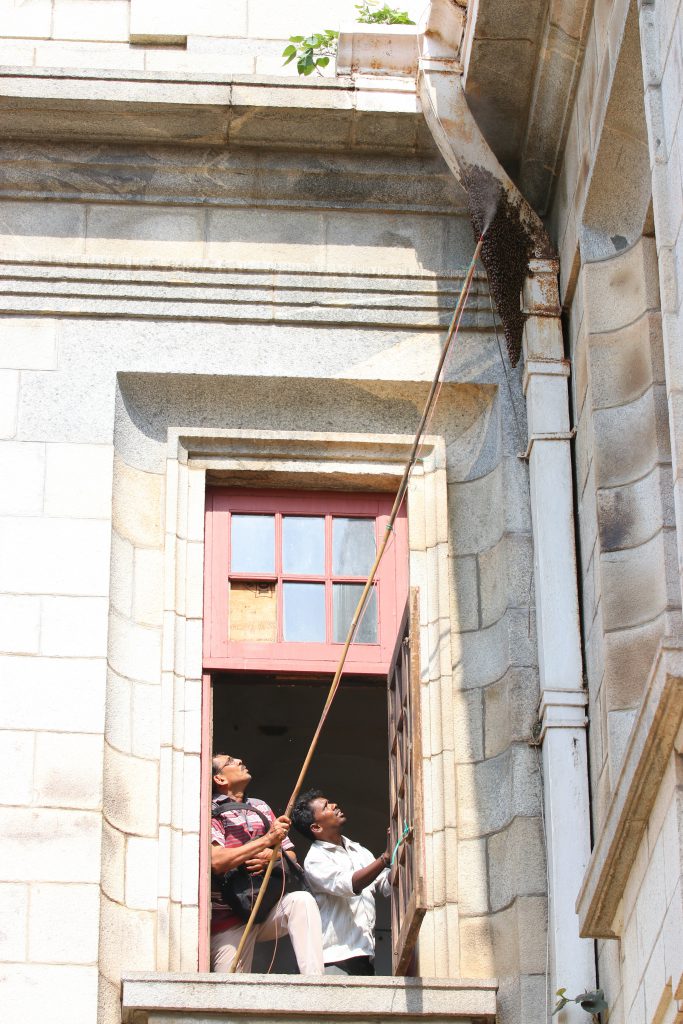
The Institute has many unsung heroes, whose contributions often go unnoticed. One among them is KA Ponnanna, a former security guard. He is often called upon when people in IISc encounter a mongoose in their lab or a snake in their homes.
Ponnanna recounts his childhood in Kodagu in Karnataka, and his journey from being a security guard at IISc to rescuing wild animals on campus and working at the Centre for Ecological Sciences (CES).
When did you first get interested in animals and wildlife? Did you have pets as a child?
I grew up amidst the forests of my native Kodagu. As a result, I am quite familiar with many wild animals including honeybees, wasps and reptiles. At home, we looked after deer, wild rabbits, and lion-tailed macaques, which were my pets. I also used to clear beehives to collect honey.
What did you do before joining IISc?
I worked as a technician in the field of communications equipment in the School of Artillery, which is part of the Indian Army. My job took me to places such as Nasik, Hyderabad, Devlali, Jammu and Dharangadhara. After leaving the defence organisation, in 1993, I joined the Institute as a security guard.
Can you recall your first impression of IISc?
Yes. My first impression was that IISc was cool and pleasant, which is quite similar to the conditions in Kodagu. The greenery made me feel at home.
How did you make the transition from working as a security guard to helping CES?
In my initial days at IISc, I cleared a beehive at the mens’ hostel near the Health Centre. A few people saw that I was fearless and enthusiastic, and recognised my talent. And soon, this news reached Raghavendra Gadagkar [Professor at the Department of Ecological Sciences]. I have been the key person on campus to clear beehives or wasp nests from rooftops and work areas, since then. And I have also provided shelter to honeybees and wasps by placing boxes at certain locations in the campus, where they don’t cause hindrance to the campus community.
I can differentiate between various types of poisonous and non-poisonous insects and reptiles. And so I have been an integral part of CES: I help maintain insects for research, and accompany students on their field trips. I have always been ready to share my knowledge about dealing with wild snakes with the students of CES or with anybody who is interested to learn.

What kind of equipment do you use in your work?
There is no special equipment, in particular. I have a gown to cover myself when I am clearing a beehive, and when I catch snakes, I use a normal stick with a self-made ‘U’ type hook. Sometimes, I immediately figure out some way of making my own equipment, depending on the situation at hand.
What happens if you encounter an animal in distress?
I sometimes rescue wild creatures without harming them and release them in forest areas of this campus. I have also offered medical assistance to animals at times.
Why do you feel it is important not to harm the animals that you are trying to relocate?
A balanced environment is necessary for the coexistence of all living beings. All our efforts must be directed towards the same. Our need for expansion has to be balanced with the need for conservation of the environment in which we exist.
What if it’s the people who are in distress?
I have provided first aid relief in case of attacks by the wild insects or creatures to the campus community. To treat bee and wasp stings, I use leaves of certain plants that stop the poison from spreading. I have also treated myself after being attacked.
How did you get attacked?
Once, I was assigned to clear a very big wasp nest. Though I covered myself with the safety gowns, the wasp stung me. The poisonous chemical caused swelling in my face and it turned red. It took me a few days to come back to normal.
Do you have a favourite animal?
I normally do not wish to name a particular animal as my favourite. All animals and insects are my favourites. I wish to explore being with all types of animals and insects, and I have loved doing this since my childhood.
What keeps you busy after retiring from IISc?
After I retired from the Institute in 2012, I have been given the opportunity to continue serving in CES. I continue helping students who are conducting research on honeybees, wasps, and the like.




